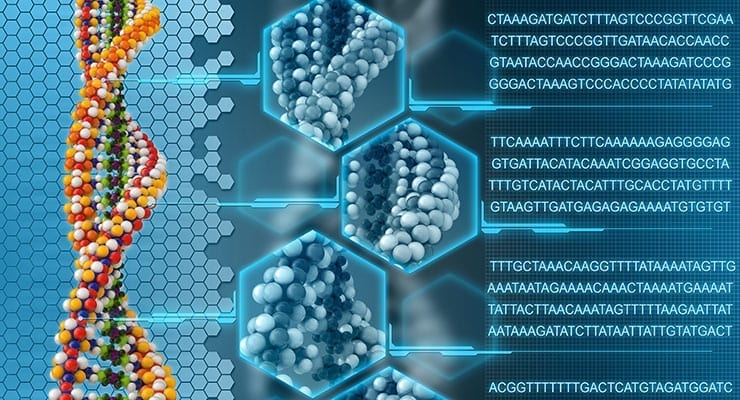An international team of CRISPR-Cas researchers has identified three new naturally-occurring systems that show potential for genome editing.
The research, published today in the journal Molecular Cell, was supported in part by the National Institutes of Health.
Enzymes from the CRISPR system are revolutionizing the field of genomics, allowing researchers to target specific regions of the genome and edit DNA at precise locations. “CRISPR” stands for Clustered Regularly Interspaced Short Palindromic Repeats, which are key components of a system used by bacteria to defend against invading viruses.
Cas9 — one of the enzymes produced by the CRISPR system — binds to the DNA in a highly sequence-specific manner and cuts it, allowing precise manipulation of a region of DNA. Enzymes such as Cas9 provide researchers with a gene editing tool that is faster, less expensive and more precise than previously developed methods.
“This work shows a path to discovery of novel CRISPR-Cas systems with diverse properties, which are demonstrated here in direct experiments,” said Eugene Koonin, Ph.D., senior investigator at the National Center for Biotechnology Information (NCBI), National Library of Medicine (NLM), part of the NIH. “The most remarkable aspect of the story is how evolution has achieved a broad repertoire of biological activities, a feat we can take advantage of for new genome manipulation tools.”
The three newly-characterized systems share some features with Cas9 and Cpf1, a recently characterized CRISPR enzyme, but have unique properties that could potentially be exploited for novel genome editing applications.
The researchers took a novel bioinformatics approach to discover the new proteins, provisionally termed C2c1, C2c2, and C2c3, developing a series of computational approaches to search NIH genomic databases and identify new CRISPR-Cas systems.
In addition to Koonin, the research team included Feng Zhang of the Broad Institute of MIT and Harvard and the McGovern Institute for Brain Research at MIT, Konstantin Severinov of Rutgers University – New Brunswick and the Skolkovo Institute of Science and Technology, Omar Abudayyeh, a graduate student at the Harvard- MIT Division of Health Sciences and Technology, and NCBI’s Kira Makarova, Sergey Shmakov (also at Skolkovo Institute of Science and Technology), and Yuri Wolf.
“There are multiple ways to modify the search algorithm, so more exciting and distinct CRISPR-Cas mechanisms should be expected soon,” said Severinov. “These new mechanisms will undoubtedly attract the attention of basic and applied scientists alike.”
Initial experimental work exploring the function of these proteins reveals that they are substantially different from Cas9 protein, which has been widely used for genome editing.
With the analysis of C2c1, C2c2, and C2c3, the team was able to infer the intricate evolutionary pathway of these adaptive defense systems.
“The collaborative nature of this work highlights the power of bringing together top scientists with diverse strengths to innovate at the interface of computation, molecular biology and evolutionary biology,” said Zhang.
The Koonin and Zhang groups also recently collaborated on a project that resulted in the characterization of Cpf1, a novel CRISPR nuclease that is expected to become an important genome editing tool.
Read the study: Discovery and Functional Characterization of Diverse Class 2 CRISPR-Cas Systems.


